
“I didn’t know this part of the country, to be sure,” she answered, “but I did somehow picture it in my mind. Only Matera… Well, it was beyond anything I could possibly have imagined.” (Carlo Levi)
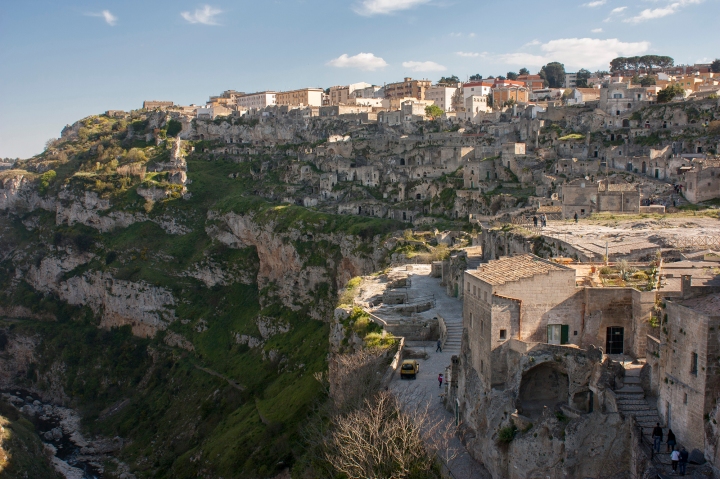
Matera was once notorious as la vergogna nazionale, the disgrace of the nation. It’s poverty stricken troglodyte inhabitants were moved into new housing between the mid 1950’s and 1970’s. Today it is a UNESCO world heritage site and will be, in 2019 the (joint) European Capital of Culture. In preparation for this the most prominent building in town, the Cattedrale di Matera was covered in scaffolding and plastic sheeting when I visited this year, though the rusty crane which scars the skyline next to it seems to have been there for many years previously.
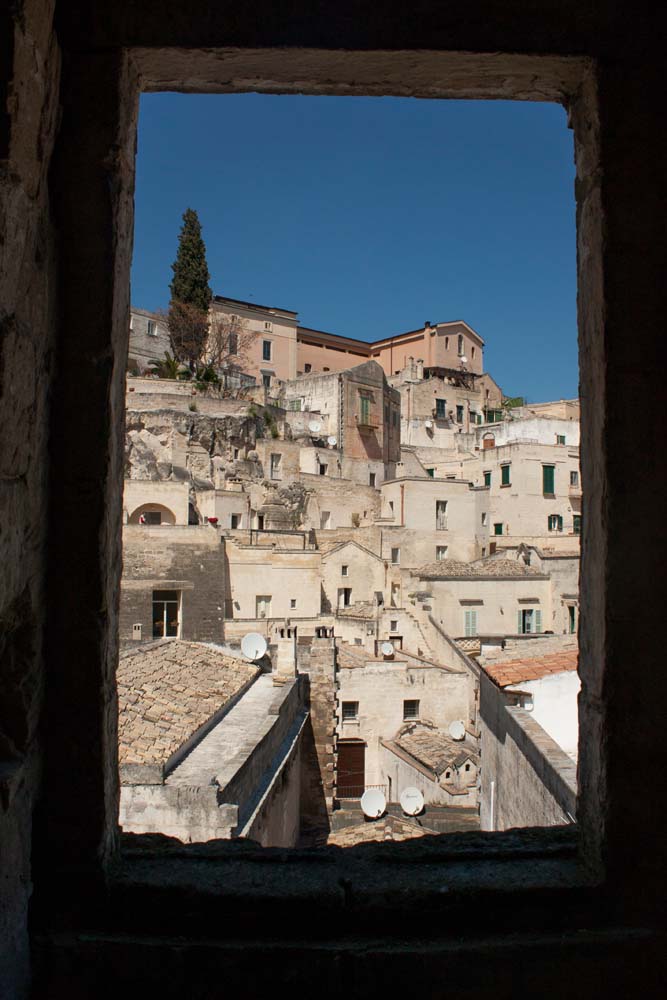
Families and businesses are slowly reclaiming many of the abandoned cave houses and the ancient town. The Sassi (the stones) are no longer the hideouts for drug gangs and thieves.
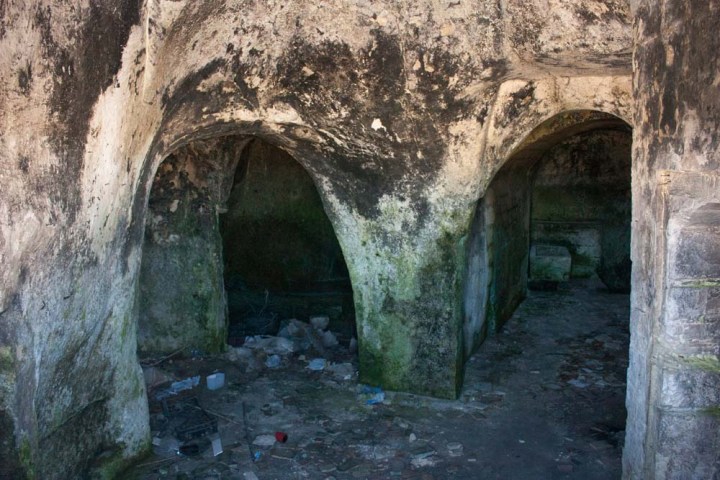
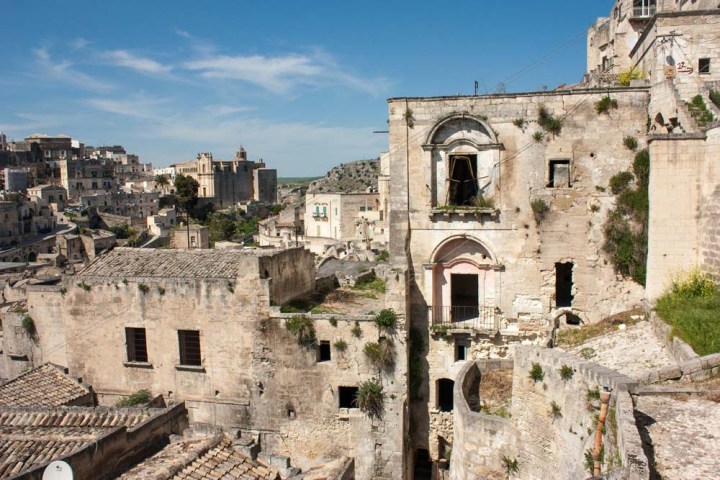

Matera first became (in)famous when described by Carlo Levi in his classic memoir, Christ Stopped at Eboli. Yet Levi himself had never been there. Instead in his book the unforgettable descriptions of it’s misery, poverty and disease afflicted children are narrated by his sister Luisa when, in exile to the south for his anti-fascist activities she visited him in 1935 . She had been “horrified and frightened by what she had seen.”
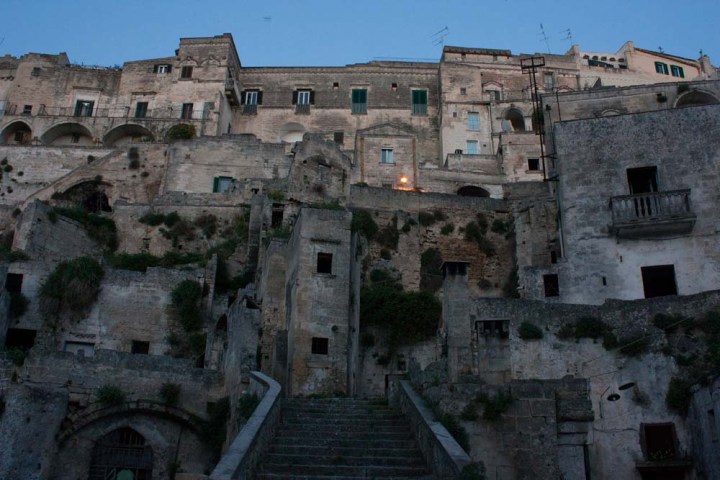
Like Luisa I too arrived by train from Bari in Apulia to visit Basilicata, the region in the “instep” of the Italian boot. Like Luisa, emerging from the underground railway station I was unable to see the Sassi. “It’s down there.” a commuter said to me, pointing. He headed off uphill towards the rather uninteresting looking cluster of modern low rise office blocks and I made my way down to Via Roma to check into my hotel for the next couple of nights.
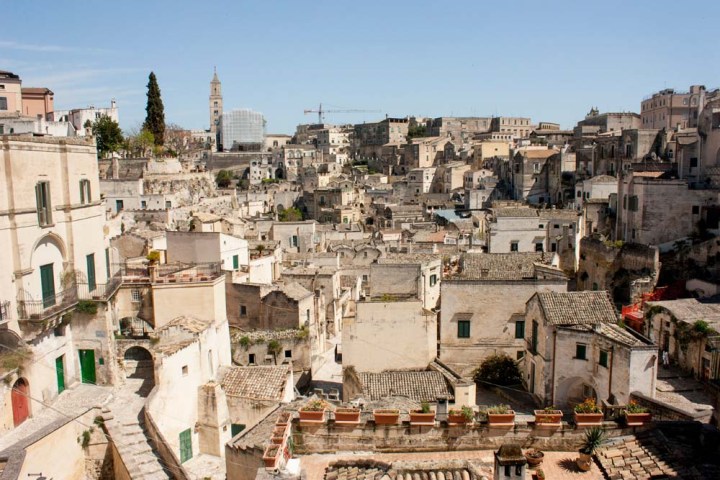
A few minutes later I was wandering in the ravine of the Sasso Barisano, the late April sunshine dazzling, reflected from the white walls of the houses “if houses they could be called. They were caves, dug into the hardened clay walls of the gully, each with its own facade, some of which were quite handsome, with eighteenth-century ornamentation.”
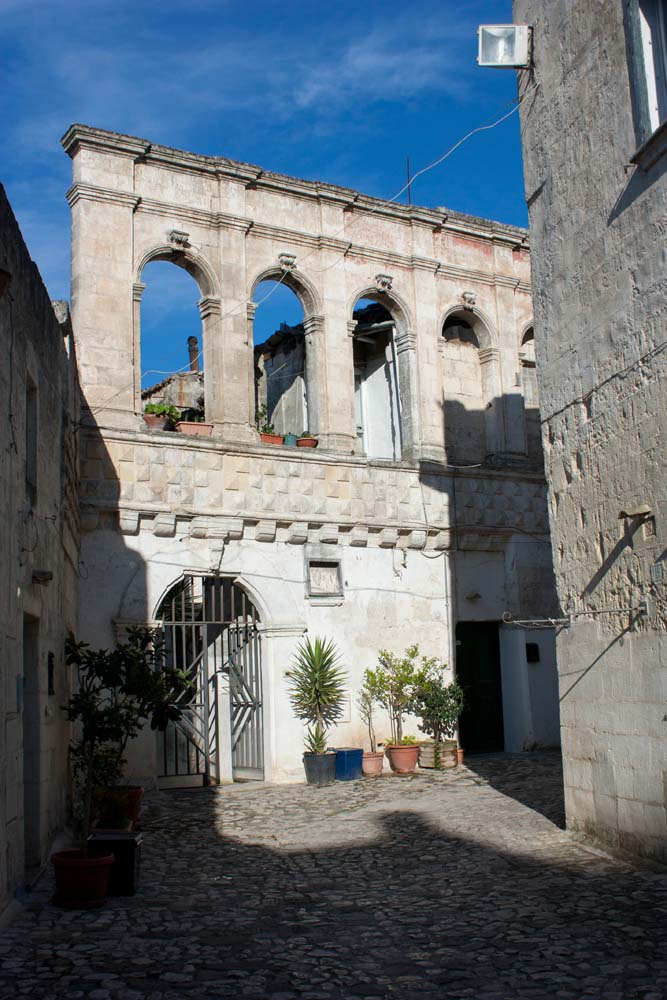
Here was the Jerusalem and Via Dolorosa of film makers Pier Paolo Pasolini (The Gospel According to St. Matthew) and Mel Gibson (The Passion of the Christ). The afternoon air was filled with swallows darting in and out of countless, glassless windows. Occasionally they alighted and called to each other in their curious mixture of chuckling and querulous warbling. Overhead the sky was filled with Lesser Kestrels who patrol the place in great numbers, gracefully wheeling in the up-draughts.

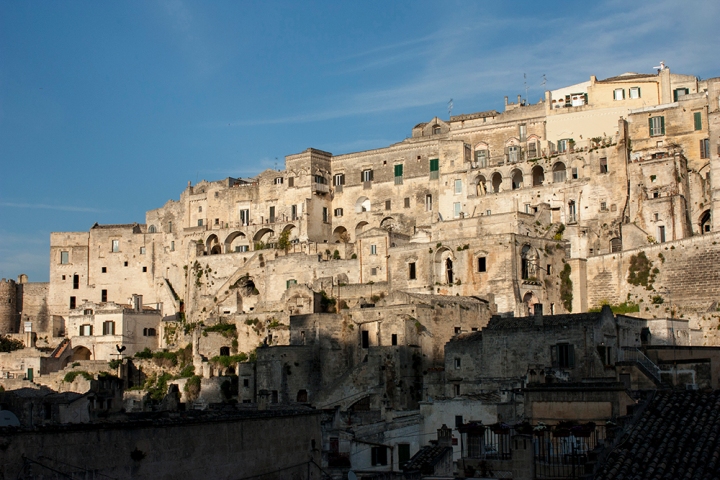
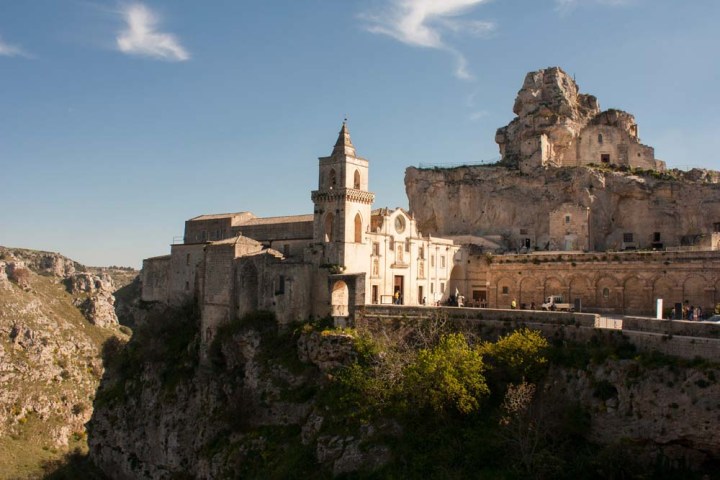

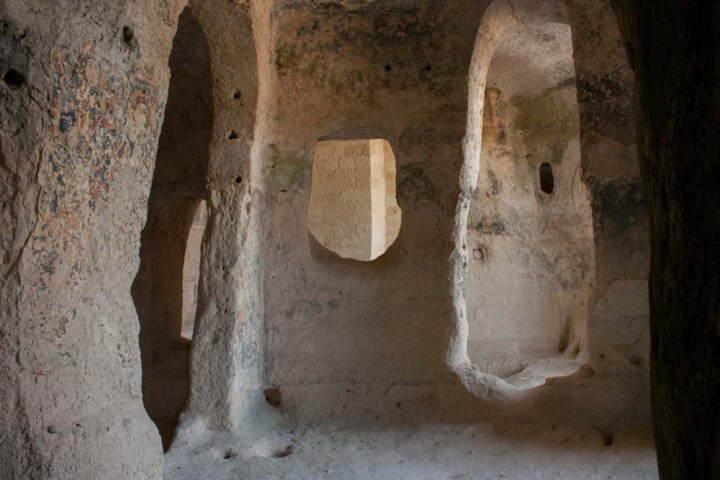
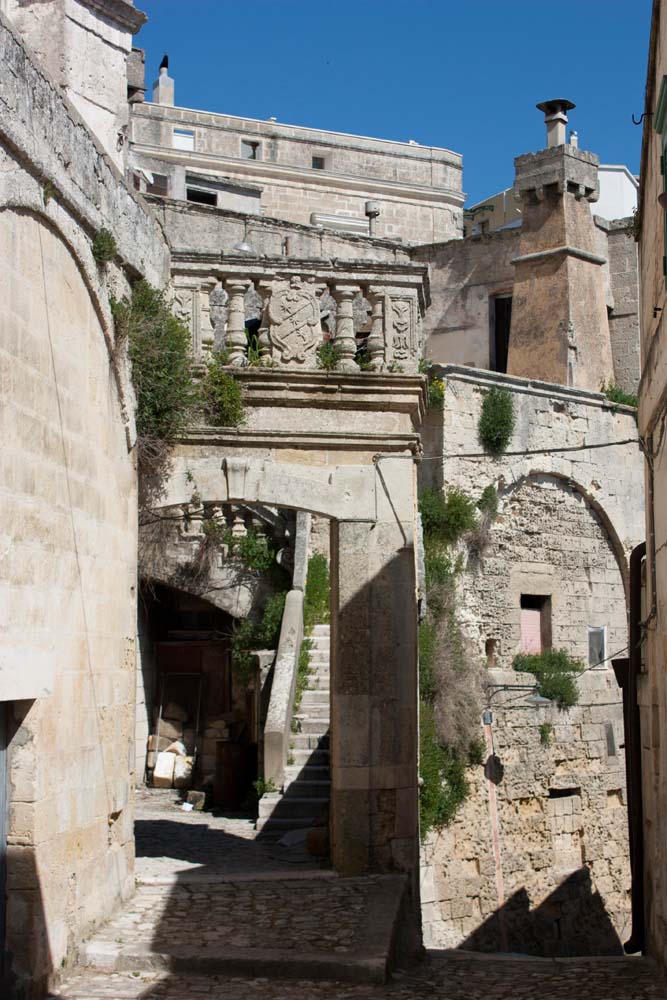
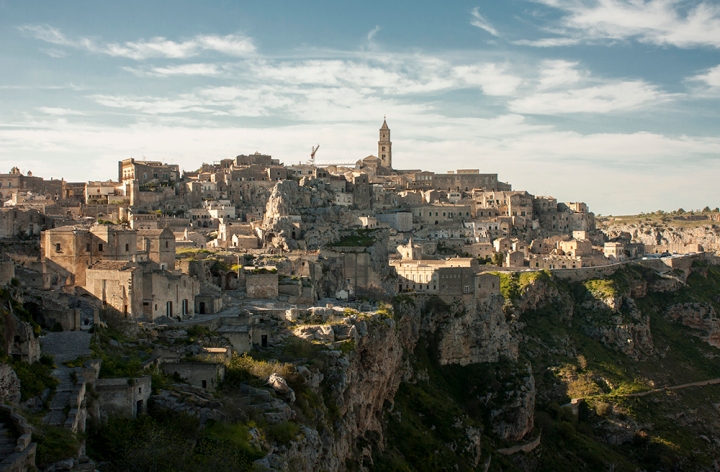
Sasso Caveoso
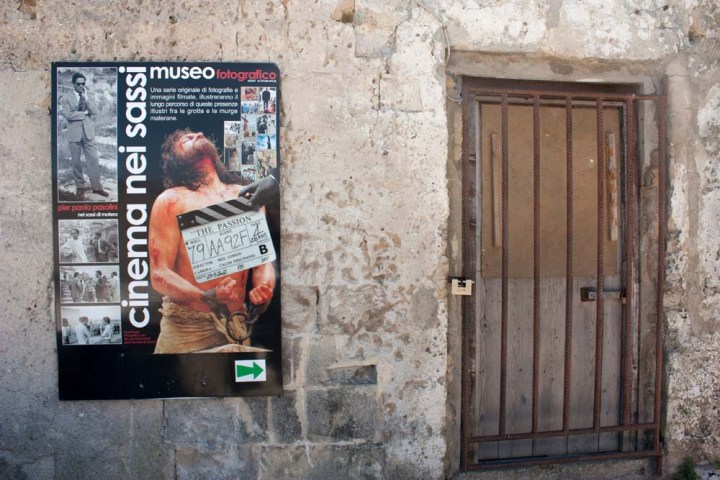
I spent that day, my 52nd birthday, and the next wandering the cobbled streets in delight, occasionally falling on my arse, slipping on some cobblestone polished to an impossible shine by centuries of human feet and animal’s hooves. I walked on people’s roofs, the smell of delicious cooking wafting from homes. Heard the blare of their TV sets. Peeked into still abandoned buildings, some future star of a TV property porn show. Shivered in the vast underground Palombaro Lungo, a water storage tank hand carved in the 17th century (only the Basilica cistern in Istanbul is larger). Marvelled at the moving fragments of Byzantine frescos in St Nicolo dei Greci standing in the open air, staring out for some 800 years across the river Gravina to the caves on the rocky escarpment opposite, “a barren hill of an ugly grey colour, without a single tree or sign of cultivation upon it.”
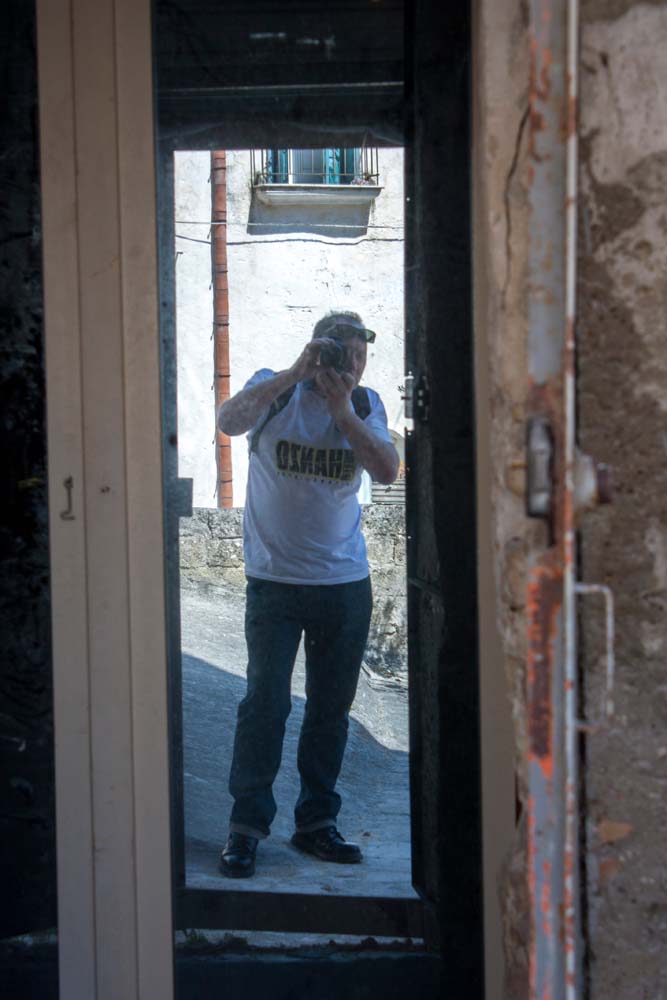
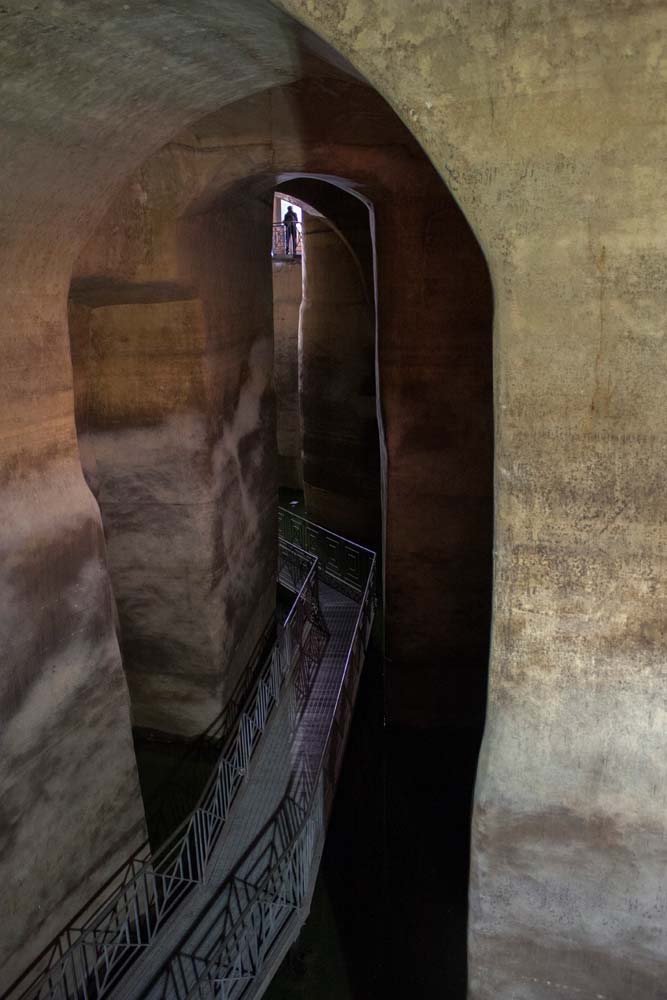 Palombaro Lungo
Palombaro Lungo

 St Nicolo dei Greci
St Nicolo dei Greci
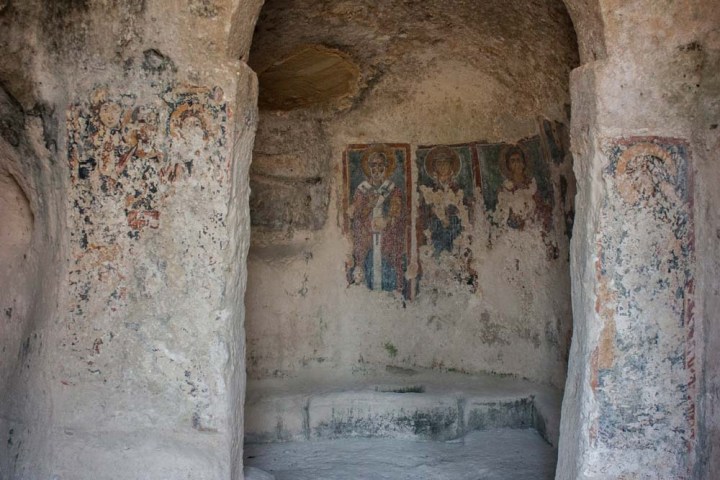 St Nicolo dei Greci
St Nicolo dei Greci
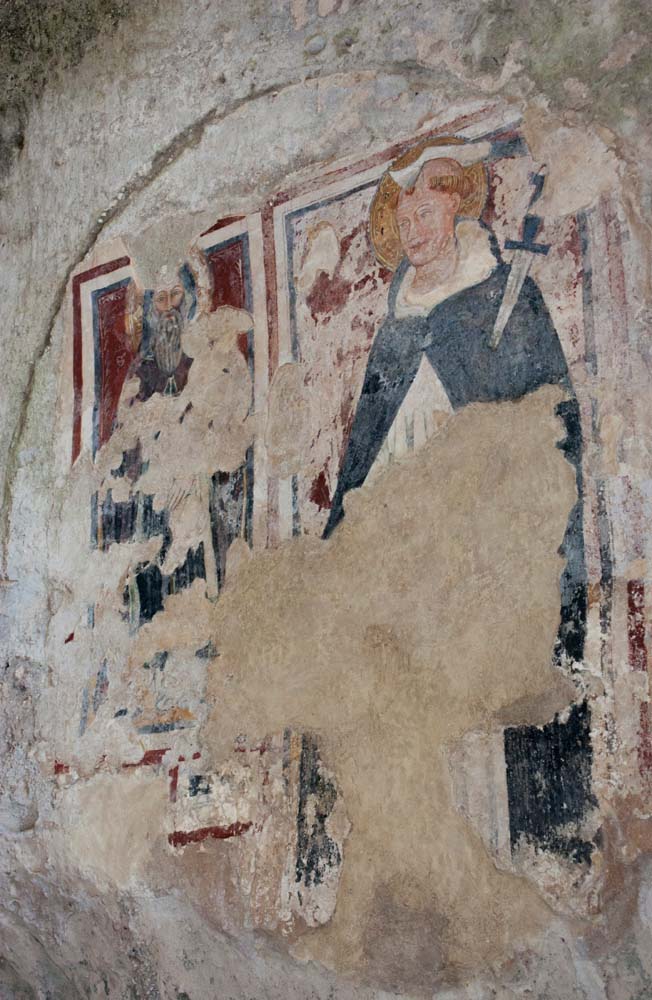 St Nicolo dei Greci
St Nicolo dei Greci
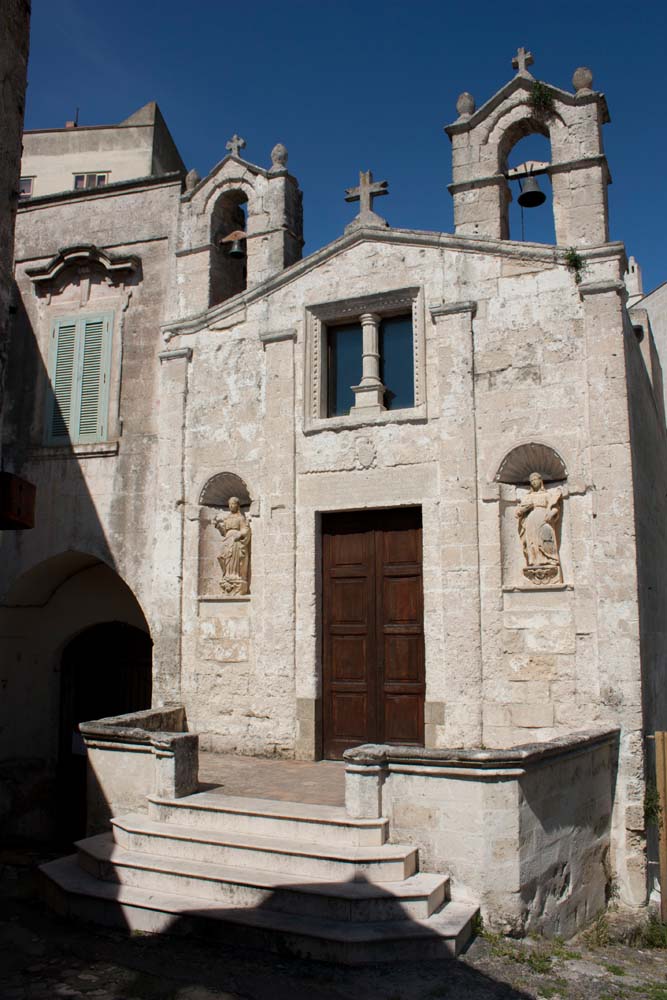 San Biagio
San Biagio
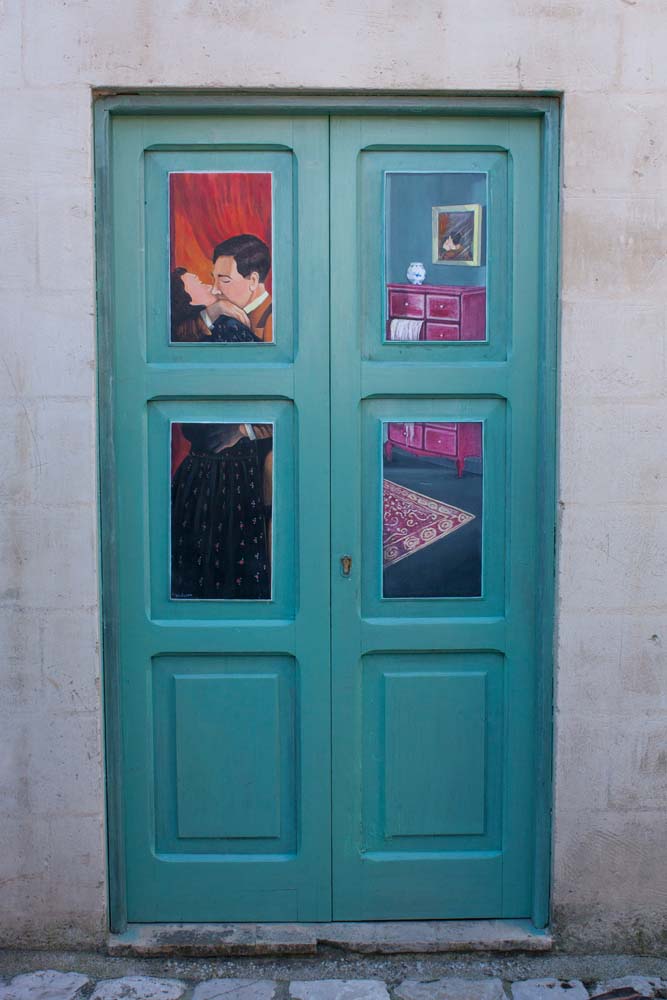
I could see people were dotted along the slopes of Jim Caviezel’s Golgotha and, being Italians I could hear their voluble, happy babble from even that distance. However I never made it over the other side to see what must be a great view of the town from those heights. I did however spend some time over the next couple of days wandering in the pleasant gully of the Gravina, no longer the “sickly, swampy stream” of Luisa Levi’s day.
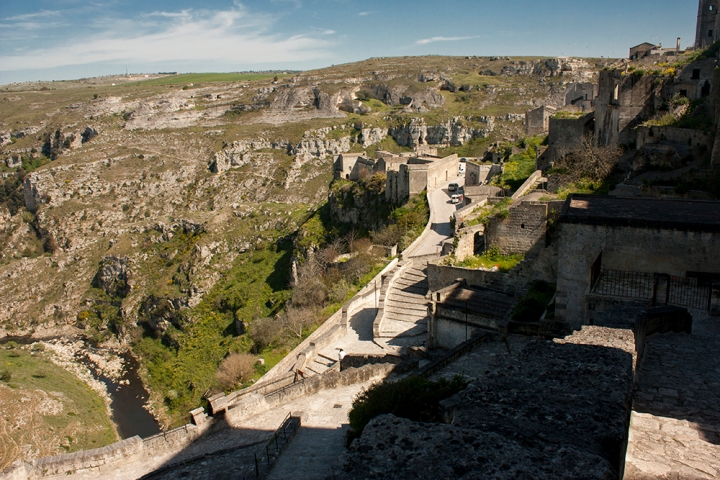
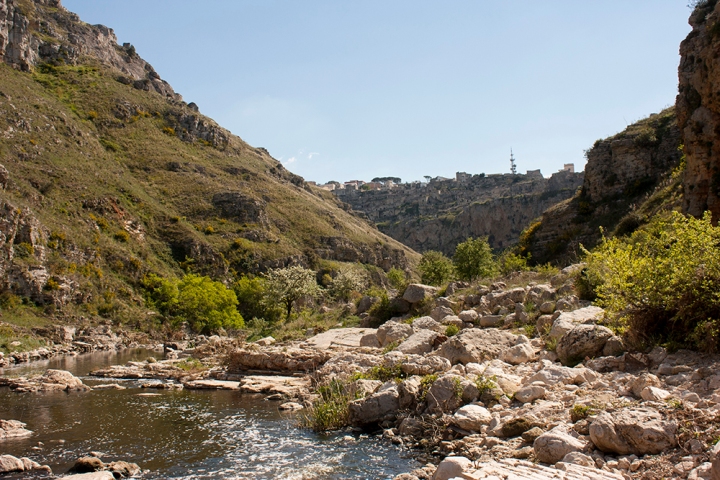 La Gravina
La Gravina
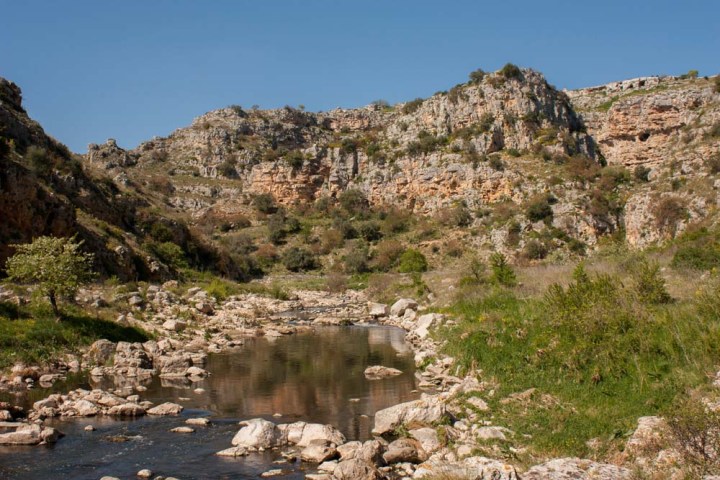
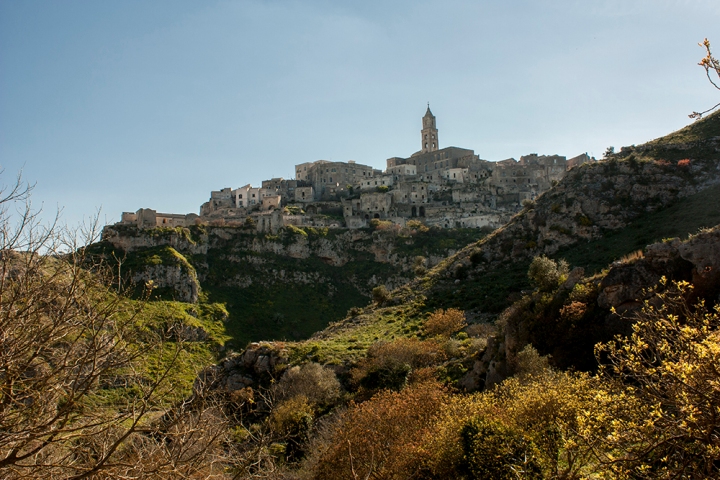
Down there I discovered a cave which could have come from the brushes of the Hanna- Barbera cartoonists who churned out the Flintstones, and the miraculous, tiny rubble built church of the Madonna di Monte Verde. With it’s giant sprouting cactus it looked like a neglected set from a Spaghetti Western about to collapse into dust. Plus, the angry sound of a wild bee colony inside kept me from getting too near. Odd to think that when this sweet but crude looking little building was constructed during the Mannerist era in 1583 Palladio had been dead for just three years and Michelangelo for nineteen.
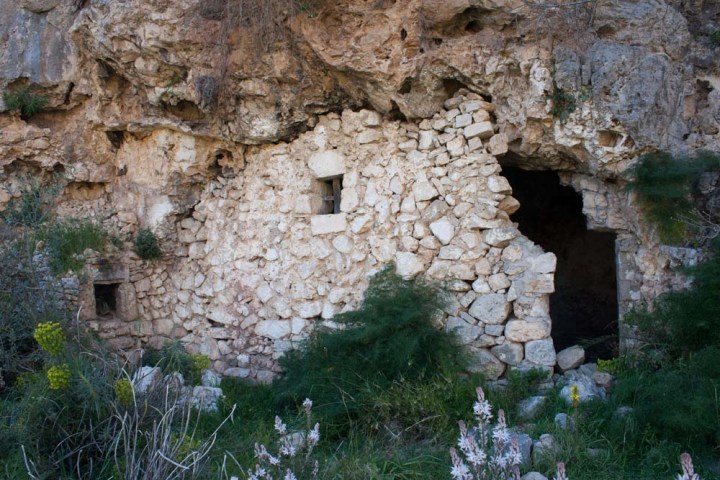
 Madonna di Monte Verde
Madonna di Monte Verde
Curiously Luisa Levi concludes her narration with an error. “Meanwhile we had reached Santa Maria de Idris, a handsome baroque church.” Santa Maria is in fact the small cave building carved from the rocky outcrop. The baroque church beside it is named after the saints Pietro e Paolo.
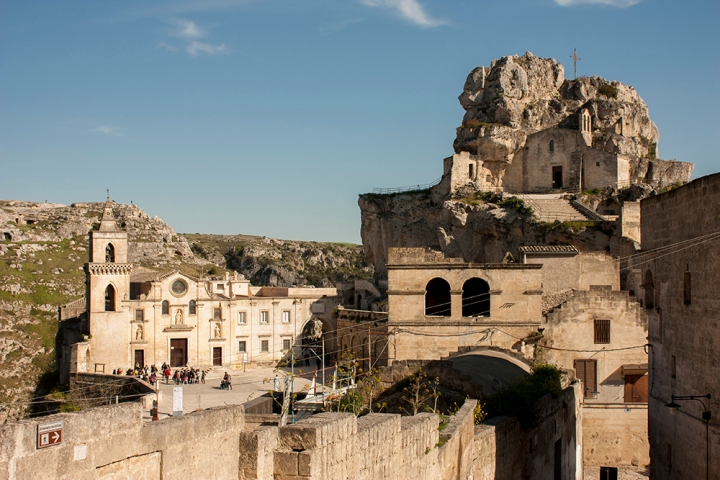
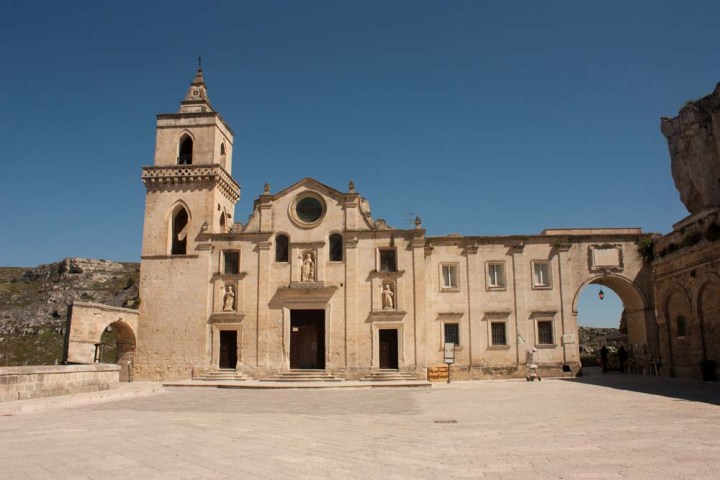
The “handsome baroque church”, Santi Pietro e Paolo
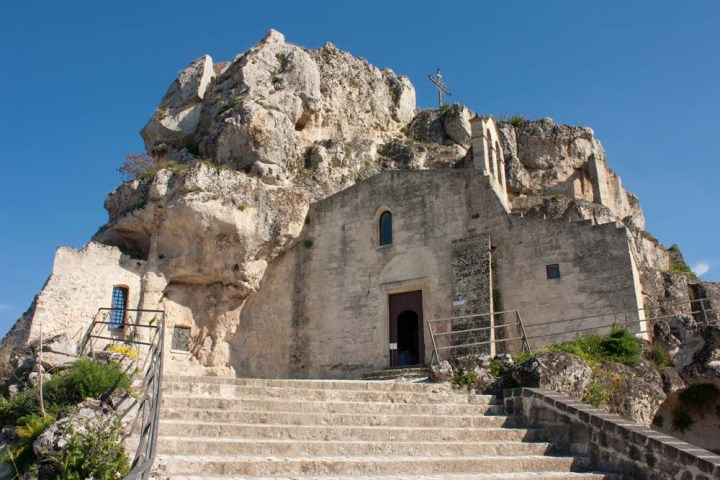 Santa Maria de Idris
Santa Maria de Idris
Back in the Sassi, near dusk the screechy swifts descended from their high altitudes to dive bomb the lanes and show the other birds how to really fly in their “mad, joyous abandon”. As Nan Shepherd wrote in The Living Mountain, “All that volley of speed, those convulsions of delight, to catch a few flies! The discrepancy between purpose and performance made me laugh out loud – a laugh that gave me the same feeling of release as though I had been dancing for a long time.”

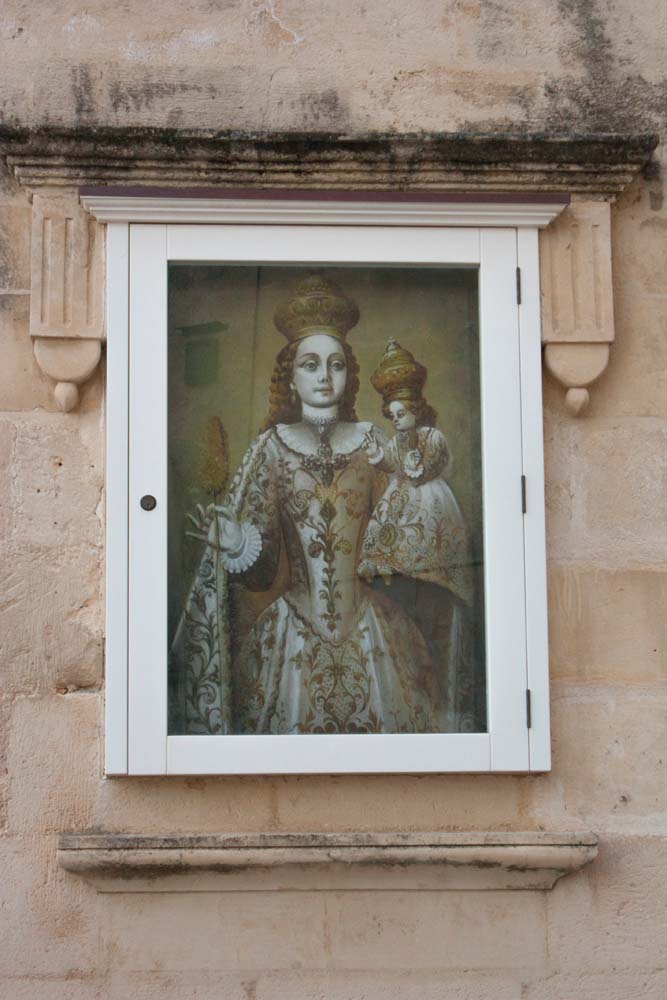
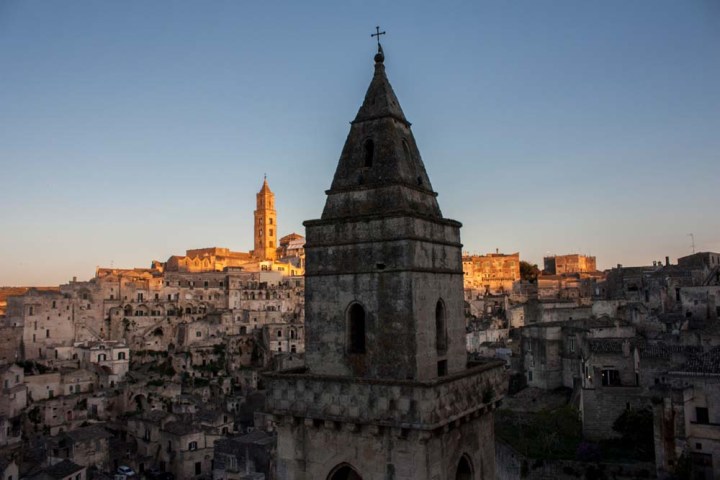
With that “high pitched cry that is hardly like the note of an earthly bird” the swift is my particular favourite. Near sunset I have watched swarms of them over Gourock Bay in the Firth of Clyde, the streets of Milano and Palermo, the ally ways of Figueres and Dubrovnik, the piazzas of Firenze and recently, great clouds of them soaring above Camogli. I even spotted with delight a small flock of Plain swifts one January outside Funchal in Madeira, a local species resident there all year. A small number of them even make their way to my London road annually, their ecstatic calls finally banishing winter. I’ve never seen them in such abundance however as in Matera, or flying with such speed and acrobatic prowess.
Even at night and after dark their tentative squeals could still be heard echoing above the near empty, car traffic free (in Italy, such a rarity in itself!) ghostly lanes of the Sassi, something I’ve never heard anywhere else. Those crepuscular cries meant it was time for an aperitivo, and a toast once more before dinner to Gaspare Campari.
